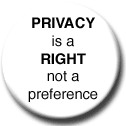15 June 1215: The Magna Carta is Sealed
00:01
A version of the Magna Carta issued in 1225 by Henry III of England and preserved in the UK's National Archives.
Image source: Wikipedia
Image source: Wikipedia
Via Wikipedia.
Magna Carta (Latin for "Great Charter", literally "Great Paper"), also called Magna Carta Libertatum ("Great Charter of Freedoms"), was an English charter originally issued in 1215. Magna Carta is the most significant early influence on the long historical process that led to the rule of constitutional law today. Magna Carta was originally created because of disagreements between the Pope, King John and his English barons about the rights of the King. Magna Carta required the king to renounce certain rights, respect certain legal procedures and accept that the will of the king could be bound by law.More here.
There are a number of popular misconceptions about Magna Carta, such as it was the first document to limit the power of an English king by law (it was not the first, and was partly based on the Charter of Liberties); that in practice it limited the power of the king (it mostly did not in the Middle Ages); and that it is a single static document (it is a variety of documents referred to under a common name).
Magna Carta was renewed throughout the Middle Ages, and further during the Stuart period, the Tudor period, and the 17th and 18th centuries. By the early 19th century most clauses had been repealed from English law. The influence of Magna Carta outside England can be seen in the United States Constitution and Bill of Rights. Indeed just about every common law country with a constitution has been influenced by Magna Carta, making it one of the most important legal documents in the history of democracy.









0 Comments:
Post a Comment
<< Home